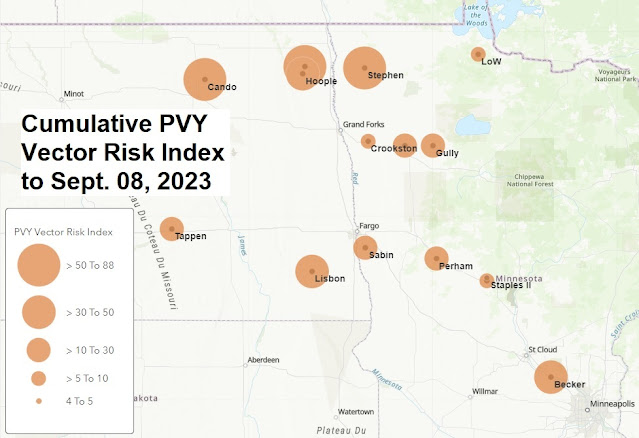Trap Catches to Sep 01 - Sep 08, 2023.
With only 6 trap locations returning this week, the average aphid capture per trap is approximately half that of last week. Far fewer vectors and non-vector species were recovered. Many locations have harvested and shut down traps. Once there's nothing in the field, the field becomes much less attractive to aphids, consequently aphid capture plummets and it makes no sense to continue trapping efforts.
Overall, very few aphids were captured. It's notable that we still were recovering green peach aphid from one location and soybean aphids don't seem to have completed their move back to buckthorn for the winter. Otherwise, no species was particularly numerous. Next week will likely be the last capture date and will represent only several trap locations..
You keep scouting and we'll keep counting.



